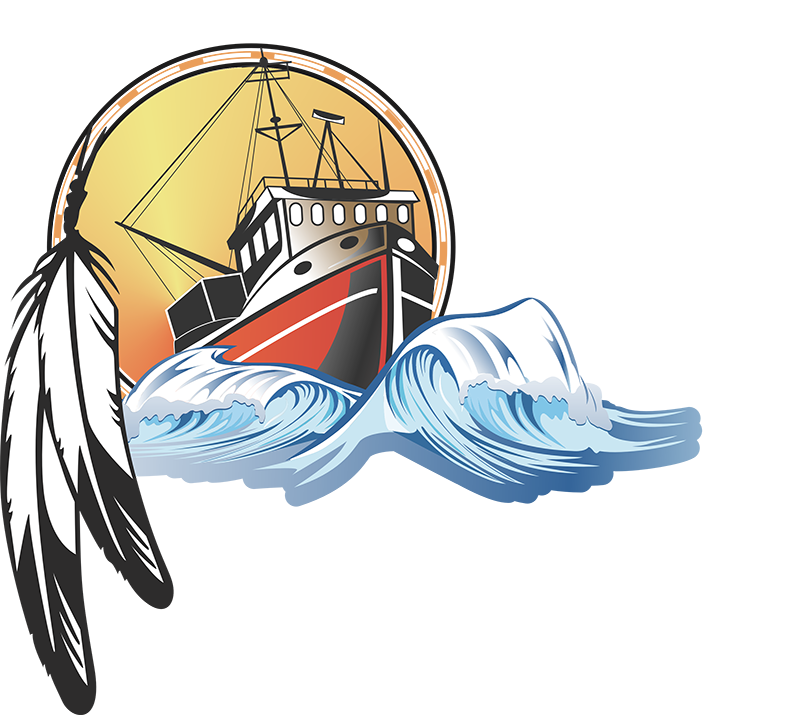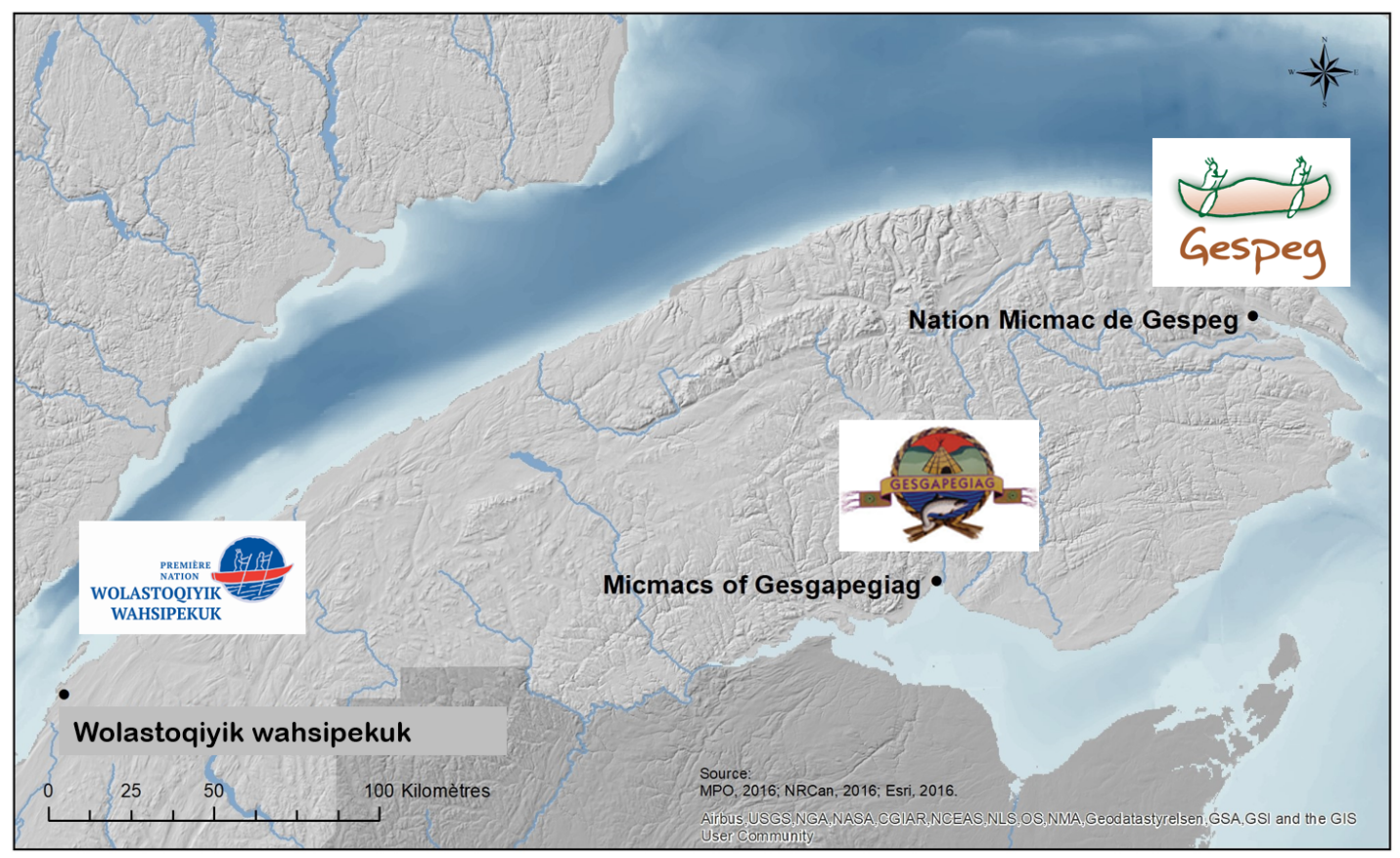Member communities
Although the Mi’gmaq of Gesgapegiag, the Mi’gmaq of Gespeg, and the Wolastoqiyik Wahsipekuk First Nation share the waters along the estuary and Gulf of St. Lawrence, these communities distinguish themselves from each other due to their geographical location, their socio-economic situation, their cultural singularity and their language.
Micmacs of Gesgapegiag
Website for the Micmacs of Gesgapegiag: gesgapegiag.ca The Mi’gmaq people have occupied the Maritimes and the southern Gaspé Peninsula for thousands of years. Traditionally, the Mi’gmaq have lived in a semi-nomadic fashion, relying mainly on fishing during the summer season and game during the winter. Among other things, the Mi’gmaqs were renowned for their adaptation to activities related to deep-sea fishing; in particular, they would have developed the art of building boats for this kind of fishing. Salmon fishing is also an integral part of Mi’gmaq culture. The Mi’gmaqs of Gesgapegiag have been involved for several years in the management of sport fishing on the Cascapedia River, whose name derives from the mi’gmaq word Gesgapegiag, meaning “strong current or large river”. Today, the Mi’gmaq fishermen of Gesgapegiag are involved in commercial fishing, including northern shrimp, snow crab, lobster, groundfish and sea cucumber. They process and sell their lobster catch at the Lobster Hut, located in Gesgapegiag.
Nation Micmac de Gespeg
Website for the Nation Micmac de Gespeg : micmacgespeg.ca The Mi’gmaq people have occupied the Maritimes and the Gaspé Peninsula for thousands of years. Traditionally, the Mi’gmaq have lived in a semi-nomadic fashion, relying mainly on fishing during the summer season and game during the winter. Among other things, the Mi’gmaqs were renowned for their adaptation to activities related to deep-sea fishing; in particular, they would have developed the art of building boats for this kind of fishing. Salmon fishing is also an integral part of Mi’gmaq culture. According to available sources, it was during the 16th century that the Mi’gmaqs settled permanently in the Bay of Gaspé. Around 1675, in their village of Gespeg, meaning “the end of the earth”, for several decades they have maintained links with European fishermen. Although new products and foreign influences are emerging, the Mi’gmaq nonetheless retain their traditional values and way of life and live in close connection with the nature around them. Today, Gespeg’s mig’maq fishermen are involved in commercial fishing, including northern shrimp, snow crab, groundfish and sea cucumber, among others.
Wolastoqiyik Wahsipekuk First Nation
Website for the Wolastoqiyik Wahsipekuk First Nation : malecites.ca The Maliseet people, also calling themselves Wolastoqiyik, which means the “people of the beautiful river”, originate from the valleys of the Saint John River and its tributaries, near the current border between Quebec and New Brunswick, in Canada, and the state of Maine in the United States. The Maliseet were traditionally a semi-nomadic people living by hunting, fishing, and cultivating corn. Following the Government of Canada’s sedentarization efforts, the Viger reserve was established in 1827, when some thirty families settled in Viger (now called Cacouna), along the St. Lawrence River. The reserve then had more than 3000 acres. The Canadian government’s incentives failed, however, and in 1869, following pressure from European settlers interested in this fertile land, the Viger reserve was surrendered. In 1876, the federal government created the Whithworth reserve, followed by the Cacouna reserve in 1891. The Maliseet, however, resisted the sedentary lifestyle, and none of them currently live permanently on either reserve. Today, the Maliseet fishermen of Wolastoqiyik Wahsipekuk are involved in commercial fishing, catching northern shrimp, snow crab, lobster, groundfish, sea cucumber as well as sea urchin. They also own shares in a snow crab processing plant.

